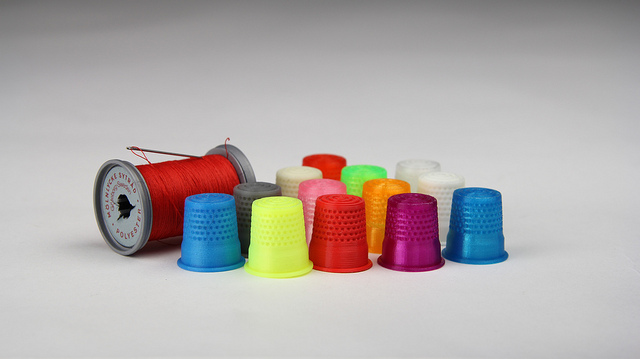Unlike 2D printing, 3D printing permits its user to experiment with a wide range of materials with which dreams can turn into reality. This gives the user a complete control on the texture and strength, apart from the design. For getting a finished product it is very necessary to first construct a 3D image of the required model in the STL format, which is then sent to a 3D printer for a print out. There are four popular techniques that are used for printing your 3D models.
- Fused Deposition Modeling
- Stereolithography
- Selective Laser Sintering (SLS)
- Poly jet/ink jet 3D printing
The lesser known 3D printing technologies are:
- Laminated object manufacturing (LOM)
- Electron beam melting (EBM)
There are different technologies that are used in 3D printing and so there are various materials that are used in this process. Some printers support around 170 different types of materials for printing. This can broadly be categorized into four important heads.
- Plastic
- Powder
- Resins
- Other materials
Plastic:
At present the most commonly used printing technology is Fused Deposition Modeling (FDM). The FDM printers use thermoplastic filament which is heated till the melting point and then the molten plastic is placed layer by layer to form the model. These printers tend to use the following materials.
Polylactic Acid (PLA)
It is probably the easiest to work as well as environment friendly. It is basically bio degradable plastic that has been derived from sources such as corn starch and sugar canes. This is available in soft and hard grades. With the increase in the popularity of PLA, this material is expected to overtake ABS in the near future.
Polylactic acid (SOFT PLA)
It belongs to the softer version of the PLA that was discussed in the earlier point. It is rubbery and quite flexible but is available in limited colors and sources.
Acrylonitrile butadiene styrene (ABS)
It is popularly known as Lego plastic and is considered to be the best material to work with as it is strong and very safe. It is made from spaghetti like filaments. It is available in a wide range of colors and is used for making of toys, bumper stickers etc.
Polyvinyl Alcohol Plastic (PVA)
It is a type of plastic that is used as dissolvable support materials or is used for special applications. Makerbot and Shapeways are manufacturing lower-cost desktop printers like the Makerbot replicator 2; the material that these printers are using is PVA.
Polycarbonate (PC)
It requires a high temperature nozzle design and is not widely used.
Powders:
The higher end printers use powder based materials for the construction of 3D models. The various powders available by which printing can be done are:
Polyamide (Nylon)
It is a strong and flexible material that allows a high level of detailing on the model. It is commonly called as white, strong & flexible / durable plastic / white plastic. It is a very strong and highly flexible plastic that is very fine and is basically a white granular powder. Due to these characteristics it is used in the interlocking and moving parts of the model.
Alumide
It also belongs to the polymide family and has a distinct sandy and granular look. This material is very rigid and strong. The objects that are made from this material are made from a blend of gray aluminum powder and polymide; which are very fine granular powder.
Multicolor
It has a sandy and granular appearance. The objects that are made of it are made froma fine granular powder.
Resins
Resins are used in 3D printing though the freedom of designing by this material is very limited. It is a bit rigid and delicate. Liquid polymer is cured with UV light to give the end product. The typical colors of this material are white, black and transparent. There are principally three different types of resins.
High detail resins
Models that use this material are constructed from a photo polymeric liquid. This material is apt for models that require fine detailing and are small.
Paintable resin
Models that have been constructed using this material have a very smooth surface and are beautifully painted.
Transparent resin
Models are made of hardened liquid so the material is very strong, hard, stiff and water resistant by nature. This makes it an ideal material for 3D models. This material is suitable for models that require a smooth surface along with a transparent look.
Other materials:
Apart from all these materials others materials are also used for 3D printing. Such as titanium, stainless steel, bronze, brass, silver, gold, ceramics, chocolate, bio ink, bone material, Objet Digital Material, Objet Tango Family, hot glue, glass, full color sandstone and gypsum.
There are a few other materials that are still in the experimental phase and which will be a ground breaking moment if turned into reality. These materials are medication and skin.
The nature of material changes with the requirement of the model. So, there is a wide array of materials from which the most appropriate material is to be chosen.
Image Credit: Creative Tools (flickrhandle: Creative_tools)
